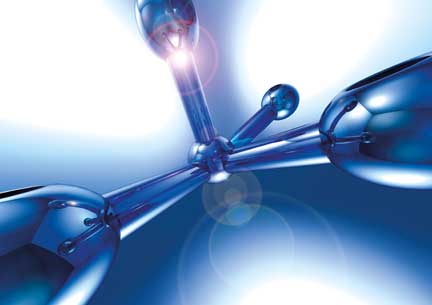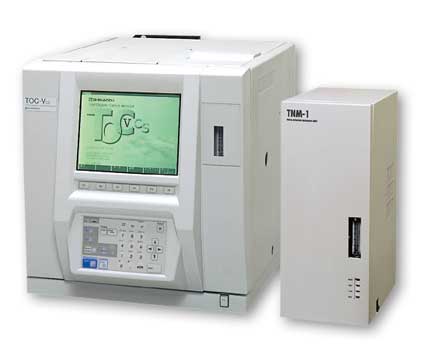Sensitivity meets robustness and precision
Evaluation of a novel TNM analytical technique for cleaning validation sample testing

This article introduces the validation and application of Total Nitrogen Measurement (TNM) as a powerful analytical technique for cleaning validation purposes after manufacturing of Trypticase-Soy-Bean broth (TSB) Mediafill batches at the fill-and-finish pilot plant for parenterals at PDMS Schaffhausen.
TNM (Total Nitrogen Measurement) is an analytical technique used for the determination of total water-borne nitrogen (TN) by means of oxidative combustion chemiluminescence. Both combustion tube and oxidation catalyst are shared with TOC (Total Organic Carbon) analysis. The well-known TOC applications used for Cleaning Validation purposes are therefore complemented by the determination of Nitrogen in the related samples. This offers an enhancement of the analytical information obtained from the cleaning validation samples, particularly with proteins and amino acids since Nitrogen is an essential part of these compounds.
 TOC with TNM-1
TOC with TNM-1
Linearity, range (0.05 – 0.85 µg Nitrogen/mL), LOQ, accuracy, precision, and sample stability of the TNM method was validated. These parameters were tested for both Glycine (used as Nitrogen reference standard) and TSB Mediafill solution. Recovery of TSB Mediafill from fill-and-finish pilot plant surface materials such as boro-silicate glass and electropolished steel was also determined. Due to the lot-to-lot variability regarding the Nitrogen content of the TSB Mediafill, a representative aliquot of the related lot was analyzed in each sequence in order to determine the Nitrogen content. The relative amount of Nitrogen was 9 % related to the organic fraction of the tested TSB Mediafill solu-tion. This value was confirmed by an elemental composition analysis.
TNM showed less interference with the rinse water or swab samples than to TOC. Further, the sensitivity of TNM was higher than that of TOC. The TNM methodology can therefore be considered as a robust and reliable analytical technique for cleaning verification purposes.
Acceptance criteria for Cleaning Validation in terms of TSB Mediafill residues on the equipment surface
Since the acceptance criterion (MAC = Maximum Allowable Carry-Over) of cleaning validation applications is essential to the method sensitivity, the validation parameters are based on this critical concentration. A limit of 10 ppm TOC (respectively 10 µg carbon/mL) was set. The total Nitrogen amount of TSB Mediafill is 9.2 %; the TOC amount is 35.8 % (average of six determinations, three lots included). Both percentages are based on the organic substances present in TSB. The results obtained from an elementary composition analysis of one TSB batch showed comparable results.
The 10 ppm TOC limit (related to TSB) therefore corresponds to 2.6 ppm TN. Since the volume of the last rinse (or the extraction volume of the swab) is related to the surface, the acceptance limit of 10 ppm TOC and/or 2.6 ppm TN should be based on a defined surface area.
According to an internal best practice, the ratio of last rinse volume to surface is 1,000 mL per m2. 10 ppm TOC corresponds to 1 µg TOC/cm2. This is equivalent to 0.26 µg TN/cm2. In the case of swab samples used for steel surfaces, an extraction volume of 40 mL has to be taken into account. For rinse samples, 400 cm2 glass surface is rinsed with 40 mL purified water.
The final MAC related concentration depends on the recovery rate of TSB Mediafill proteins, which was 50 % (worst case). As a result, 0.13 µg TN/cm2 was considered to be the MAC.
Discussion and Conclusion
The use of TNM for the determination of TSB Mediafill proteins for cleaning validation purposes was shown to be a sensitive, accurate, precise and robust method. The determination of Nitrogen in swab and rinse cleaning validation samples is specific to protein-related substances. Since the pilot plant specific cleaning procedure includes only non-nitrogen containing detergents, Nitrogen signals can be related specifically to TSB proteins or their degradation products. In addition, TC (Total Carbon) is measured in parallel.
The validation of a sensitive TC mode was not possible due to the varying amount of inorganic carbon such as carbonate in the water used for analysis. This led to precision issues for the TC mode at low concentrations. Since WFI or MilliQ water, which was used for both sample and standard preparation, is essentially free from Nitrogen, no interferences with the solvent occurred. This results in increased robustness and also sensitivity of TNM compared with TC. Nevertheless, the TC value obtained from the samples yields additional information regarding the cleanliness of the equipment, while exceptionally high TC levels indicate a contamination of the equipment by organic compounds.
The use of NPOC (Non-Purgeable Organic Carbon) evaluated during method development led to invalid results for both TOC and TN. This might have been caused by the addition of hydrochloric acid, necessary to purge inorganic carbon from samples but also leading to precipitation and/or adsorption losses of the TSB proteins. The TC/TN mode was therefore used for development and validation of the method.
A limiting factor in increased sensitivity of TNM is the sample volume, at most 300 µL (software limitation). Compared with sample volumes using a high sensitivity catalyst for regular TOC analysis, the injection volume for TNM is lower by a factor of approx. 15. Nevertheless, the method showed sufficient sensitivity for the intended purpose.
The cleaning procedure after manufacturing of TSB Mediafill batches at the fill-and-finish pilot plant for parenterals at Schaffhausen was validated successfully using the reliable and robust TNM technique.